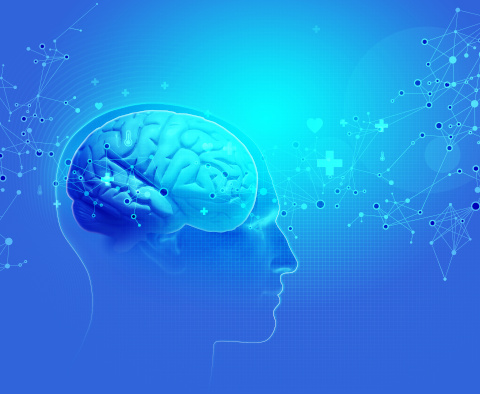Creatively Coping - The Benefits of Being Creative
As the COVID-19 pandemic seemed to shut down the world, grocery stores, or at least what was left on the shelves at grocery stores, became an indicator of where people were at in their experience of the stressful event. First, the toilet paper, comfort foods, canned foods, etc. flew off the shelf showing the panic people were feeling at the beginning of the unprecedented period of uncertainty. However, as people started settling into their new normal, the baking supply aisle started clearing out, home renovation and project supplies started disappearing, seeds and other gardening items were in high demand. Do it yourself (DIY) projects started trending online and pictures of sourdough, banana bread and other proud projects were all over social media.
It would appear that people started using their time to get more creative. This creative spark may actually be more than a simple way to pass the time as people found themselves with fewer places to be and things to do. There’s a good chance getting creative is one of the best things we can do for our health, especially during times of high stress. Below are just five of the ways that creativity benefits our health.
Enjoyable creative tasks help to reduce stress
Anyone who has ever been “in the zone,” or in flow while working on an enjoyable creative task can probably attest to feeling calmer, happier, and less stressed while working on and after working on the task. Much like meditation, mindful creative tasks bring a person into the present moment and out of a head that may be busy with worries or stresses. A 2016 study even showed a drop in cortisol

(the hormone commonly associated with stress) after just 45 minutes of working on a creative task, regardless of age or gender. Not only were the participants in the study less stressed after the task but they also felt inspired to do more creative activities (1).

Creativity helps support the immune system
Cortisol, the stress hormone that was just mentioned, actually tends to have a suppressive effect on the immune system. In other words, increased cortisol levels temporarily lower the immune system’s response or activity. This effect (cortisol lowering the immune response) is actually beneficial when cortisol is increased for small amounts of time in response to short periods of high stress.
The issue comes with chronic stress. Chronic stress refers to being stressed out for long periods of time without resting. The problem with long periods of stress without rest is that cortisol levels never get a chance to go back down after the stressful period ends (2). That’s where the creative tasks come in. For someone who has a significant amount of daily stress in their lives, incorporating some time for a creative task that is fun and enjoyable on a daily basis can give your body and mind the stress break that it likely needs and keep your immune system functioning at its best.
An interesting study looking at the creative task of expressive writing showed a positive effect on the immune system. The researchers looked at patients who had HIV, an infection that impairs the immune system by lowering the number of cells that help kill viruses. They found that patients who participated in expressive writing had higher numbers of these helpful killer cells at the end of the study than those who didn’t. They also found that the expressive writing patients were healthier, in that they had lower amounts of HIV in their blood (or a lower viral load).
Creativity supports brain health
It turns out engaging in enjoyable creative tasks affect the brain at all ages and stages of life. In children, the importance of creativity in brain development can often be easily observed. If you’ve ever had the pleasure of watching children at play, you’ve probably seen them make connections and learn as they engage in creative play. In fact, there have been countless studies showing the importance of play for a well developed brain. Play helps children learn to socialize, learn to interact with their environment, learn how to self-regulate, and even helps them learn how to learn. Creative play helps the brain grow, form new neural connections, and likely helps in the development of neural structures involved in emotional regulation such as the amygdala and hippocampus. Numerous studies have shown the importance of play in cognition and executive function. These studies highlight the important role play has in helping children focus and learn (3). Executive function, specifically, refers to the ability to focus and learn and is often lacking in children that may experience behavioural disorders or attention disorders like ADHD. The important role play has in executive function make it useful in these cases as a therapy.
By this point, it should be more than clear how important creativity is for the developing child’s brain but did you know it is just as important for the aging adult’s brain? In adults, cognition and executive function are still important and creative tasks can help us learn better, think better, and focus more. As discussed earlier, engaging in creative tasks helps with stress, and we can probably all attest to a relaxed brain being better able to focus, think, and learn than a stressed one. Research even supports these claims. A study in 2004 found that older adults who received musical theatre training were able to remember more, problem solve more easily and even had improved self-esteem, and a higher sense of well-being than those who didn’t (4).
Creativity helps cope with trauma
As previously discussed, engaging in creative tasks seems to help in the development of parts of the brain that are involved in processing and regulating emotions (i.e. the amygdala and hippocampus). Can you guess which parts of the brain tend to be less developed in people who have experienced trauma? The amygdala and hippocampus are both part of the limbic system. The limbic system includes parts of the brain involved in regulating emotions and it seems that these parts take a hit when someone experiences trauma in their life, especially if it is early on in life (5).
It comes as little surprise then that creative tasks like art can help process trauma and address symptoms that may be the result of unresolved trauma. Art and creativity have been used as a form of self-expression in cases of trauma and have also helped when used therapeutically with disorders or symptoms resulting from trauma such as Post Traumatic Stress Disorder (PTSD), anxiety or depression (6,7).
Creativity helps with pain management
Many people describe “being in the zone” during a creative task as being focused on the task at hand and less aware of aches and pains or other distractions. If you’ve ever been absorbed in doing something you love, you can probably attest to the joyous, peaceful feeling you might have experienced while doing the task. The research also seems to show that not only does participating in an enjoyable creative task ease pain in the moment but positive effects seem to last outside of the creative task particularly when guided by a professional, like an art therapist. In a fairly recent study, hospital patients that were engaged in a creative task under the guidance of an art therapist reported significant improvements in pain, mood, and anxiety (8).

Art also seems to help reframe a person’s perception of pain, creating something beautiful from something painful. This creative reframe not only increases a person’s resilience to pain but also tends to lead to better rapport with healthcare providers, easier communication and overall better health outcomes (9).
In conclusion…
While thankfully quarantines don’t last forever, making time for creativity and the things that bring you joy should definitely stick around. Your health depends on it!
References
1) Kaimal G, Ray K, Muniz J, Kaimal G, Ray K, Muniz J. Reduction of Cortisol Levels and Participants’ Responses Following Art Making. 2016;1656(June).
2) Vitlic A, Lord JM, Phillips AC. Stress, ageing and their influence on functional, cellular and molecular aspects of the immune system. Age (Dordr). 2014 Jun;36(3):9631.
3) Yogman M, Andrew G, Jeffrey H, Hirsh-Pasek K, Golinkoff RM. The Power of Play : A Pediatric Role in Enhancing Development in Young Children. 2018;142(3).
4) Noice T. A Short-term Intervention to Enhance Cognitive and Affective Functioning in Older Adults. 2004;16(1):562–85.
5) O’Doherty DCM, Chitty KM, Saddiqui S, Bennett MR, Lagopoulos J. A systematic review and meta-analysis of magnetic resonance imaging measurement of structural volumes in posttraumatic stress disorder. Psychiatry Res. 2015 Apr;232(1):1–33.
6) Campbell M, Decker KP, Kruk K, Deaver SP. Art Therapy and Cognitive Processing Therapy for Combat-Related PTSD: A Randomized Controlled Trial. Art Ther J Am Art Ther Assoc. 2016;33(4):169–77.
7) Abbing A, Ponstein A, van Hooren S, de Sonneville L, Swaab H, Baars E. The effectiveness of art therapy for anxiety in adults: A systematic review of randomised and non-randomised controlled trials. PLoS One. 2018;13(12):e0208716.
8) Shella TA. Art therapy improves mood, and reduces pain and anxiety when offered at bedside during acute hospital treatment. Arts Psychother [Internet]. 2018;57:59–64. Available from: http://www.sciencedirect.com/science/article/pii/S0197455617301053
9) Wilson C, Bungay H, Munn-Giddings C, Boyce M. Healthcare professionals’ perceptions of the value and impact of the arts in healthcare settings: A critical review of the literature. Int J Nurs Stud. 2016 Apr;56:90–101.



